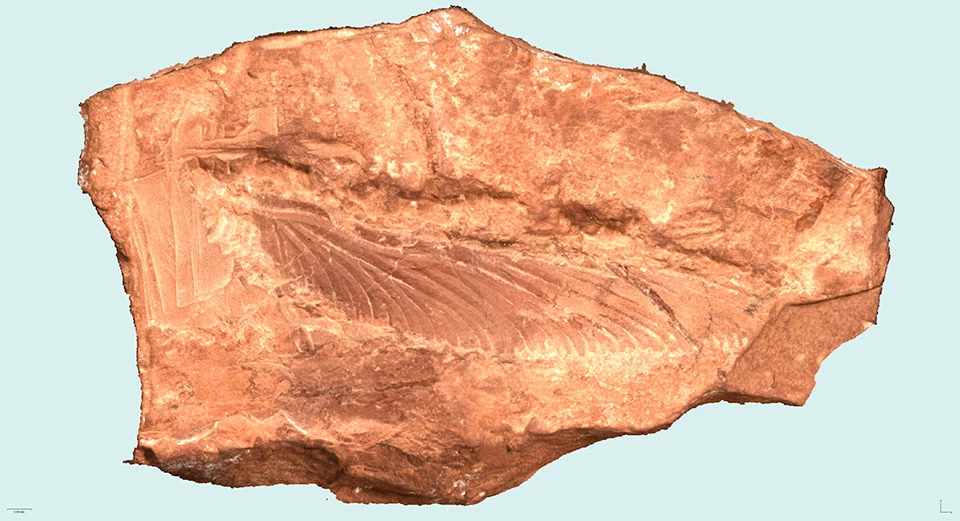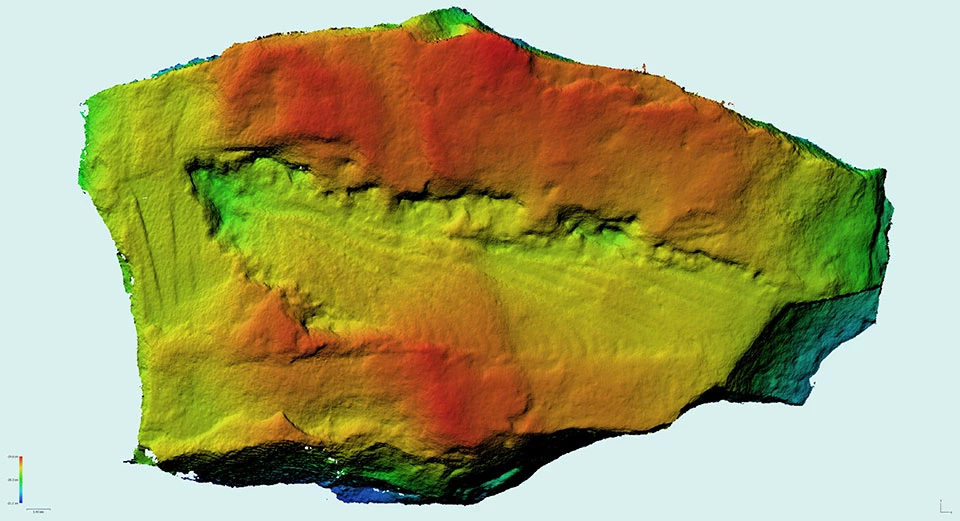Part of a series of articles titled Grand Canyon Collections—Paleontology.
Previous: Stock’s Vampire Bat
Article
This insect lived 285 million years ago, in the early Permian period. During this time, the atmosphere contained 30% oxygen, much higher than the 21% oxygen it contains today. These high oxygen levels allowed insects to reach enormous sizes. This particular specimen had an 8 inch wingspan, but closely related species grew much larger. Meganeuropsis permiana, the largest species in this group, had a whopping 28 inch (71 cm) wingspan. These species belonged to a group called the Meganisoptera and were probably close relatives of modern dragonflies. We know that they were not true dragonflies because of differences in the shape of their wing veins.
Species: Typus whitei
This fossil, is the type specimen for T. whitei and is from the Hermit Shale of Lower Permian time (~280 million years old). This nearly complete fore-wing is from an early and much larger insect simlar to a dragonfly.
The description of the fossil by Carpenter (1928) is available here: https://www.hindawi.com/journals/psyche/1928/082052/abs/
This fossil is in the collections at Grand Canyon National Park, Arizona. Learn about paleontology in the National Park Service: https://www.nps.gov/subjects/fossils/index.htm
Learn more about Grand Canyon National Park’s Centennial: https://www.nps.gov/grca/getinvolved/centennial.htm
Grand Canyon—Dragonfly Wing Fossil


Left image
Dragonfly wing fossil model with true color overlay.
Credit: NPS image by Jack Wood.
Right image
Dragonfly wing fossil model with color ramp overlay.
Credit: NPS image by Jack Wood.
Part of a series of articles titled Grand Canyon Collections—Paleontology.
Previous: Stock’s Vampire Bat
Last updated: May 3, 2021